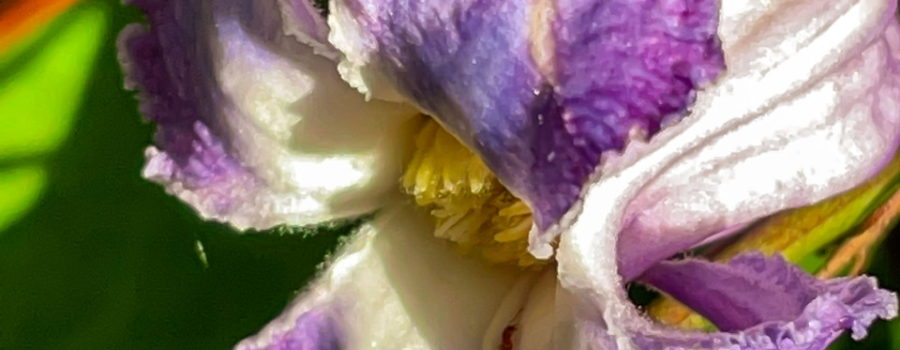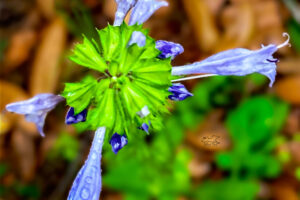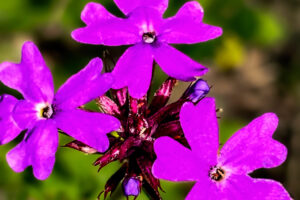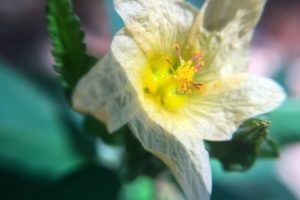Swamp Leatherflower is Unusual and Beautiful

Not too long ago, I took an unplanned trip out to a small county park, Henry Beck Park. It’s a pretty little family park with a nice stream running through it. It’s not far from my home, but because of the stream, it is a moister habitat than where I live. That little afternoon jaunt gave me the opportunity to photograph some species of plants and animals that I don’t get to see here or at my office, which is also in the sandhills. One of the plants that I found there that definitely would not grow here was the swamp leatherflower. As it’s name implies, it prefers to grow in moist, rich soils, which is certainly not the sandhill’s dry sandy soil!

I actually found this flower by accident. I was trying to get down closer to the water to get a photo of some of the wild water lily flowers and I tripped over this vine that really didn’t want to let go of my foot! I had to stop to untangle my foot and also stabbed my hand with one of the thorns on the vine! The vine itself was kind of pretty with dark green leaves, and when I followed it along the ground in an effort to avoid tripping again, I found this single, colorful purple and white flower. The bell of the flower was pointed towards the ground, and when I tipped it up to look inside, there was a gorgeous yellow center. Of course, it had to be photographed (I did go back to the lilies later).

I was not familiar with this particular flower, so when I got home and got my camera recharged, I looked it up in my PictureIt app and discovered that it is a swamp leatherflower. It is native to Florida and the eastern United States as far north as Virginia. It can also be found west into eastern Texas. It’s found along riverbanks, coastal plains, in marshes, and in moist wooded areas, but it is not found in areas accessible to salt water since it has a very low tolerance for salt. The plant usually blooms from March through September with a large bloom in the early spring and fall and intermittent blooming during the summer. It is a perennial and leaves or even the vine may die back during cold winters, but the plant will regrow as soon as the temperatures start to rise.

One of the most interesting things about these flowers is the fact that they do not have petals. The pretty purple and white structures that look like petals are actually sepals (the leafy structures that grow directly off the stem and usually protect the bottom of the petals). Being sepals, they are thicker than most petals would be, which is why they are called leather flowers. Like many other Florida natives (Drummond’s phlox, coral honeysuckle, and lyreleaf sage to name a few), swamp leatherflower can be used as an ornamental in gardens and yards. The vine likes to climb, so it can be used on trellises or to cover fences. The flowers are not only beautiful, but they are also fragrant so they attract pollinators like butterflies, hummingbirds, ants, moths, bees, and wasps. The seeds are also eaten by birds and small mammals, so adding these plants to your garden also helps attract native wildlife. But do be careful where you plant since this vine can be highly toxic to people, dogs, cats, and horses. How many of you are familiar with this little beauty?






Recent Comments